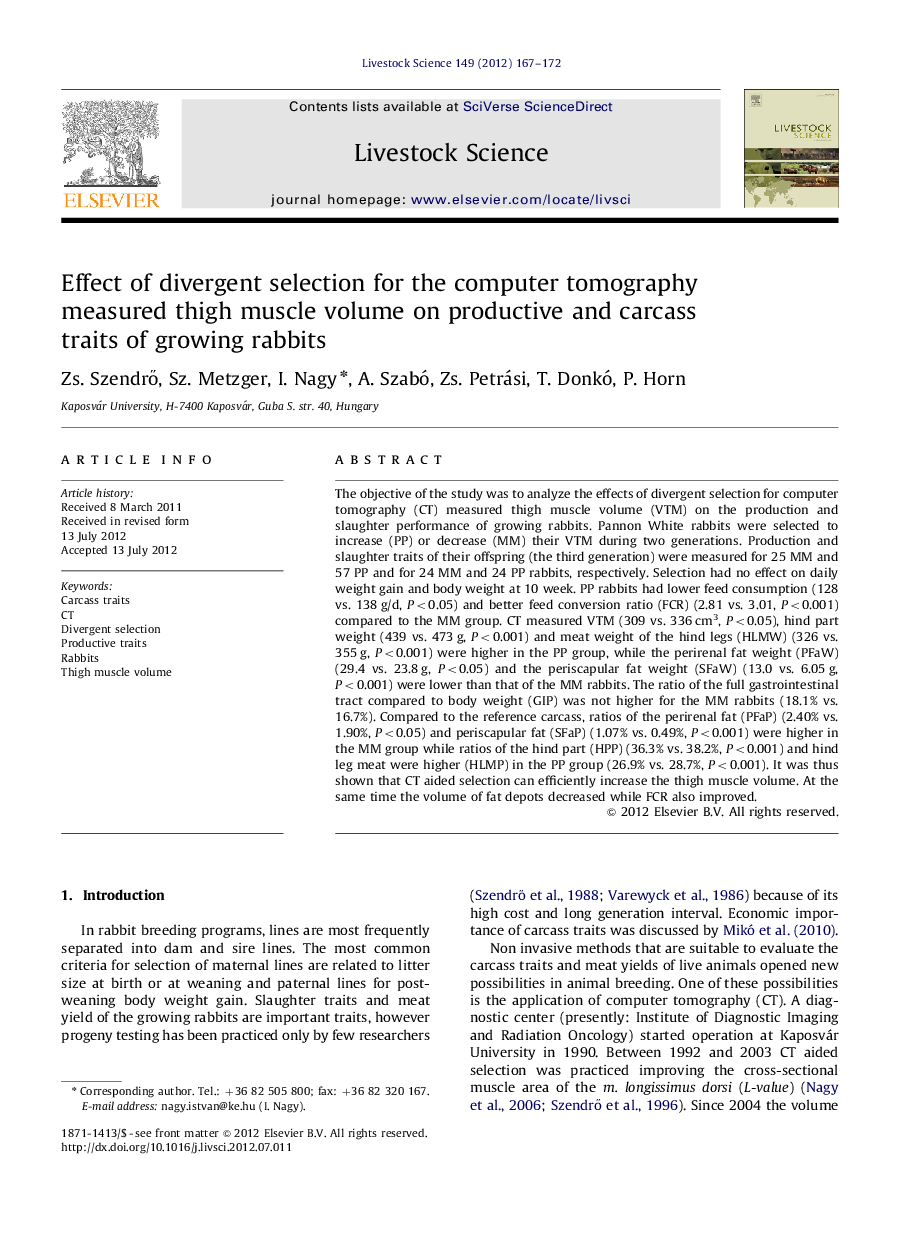| Article ID | Journal | Published Year | Pages | File Type |
|---|---|---|---|---|
| 5790715 | Livestock Science | 2012 | 6 Pages |
Abstract
The objective of the study was to analyze the effects of divergent selection for computer tomography (CT) measured thigh muscle volume (VTM) on the production and slaughter performance of growing rabbits. Pannon White rabbits were selected to increase (PP) or decrease (MM) their VTM during two generations. Production and slaughter traits of their offspring (the third generation) were measured for 25 MM and 57 PP and for 24 MM and 24 PP rabbits, respectively. Selection had no effect on daily weight gain and body weight at 10 week. PP rabbits had lower feed consumption (128 vs. 138Â g/d, P<0.05) and better feed conversion ratio (FCR) (2.81 vs. 3.01, P<0.001) compared to the MM group. CT measured VTM (309 vs. 336Â cm3, P<0.05), hind part weight (439 vs. 473Â g, P<0.001) and meat weight of the hind legs (HLMW) (326 vs. 355Â g, P<0.001) were higher in the PP group, while the perirenal fat weight (PFaW) (29.4 vs. 23.8Â g, P<0.05) and the periscapular fat weight (SFaW) (13.0 vs. 6.05Â g, P<0.001) were lower than that of the MM rabbits. The ratio of the full gastrointestinal tract compared to body weight (GIP) was not higher for the MM rabbits (18.1% vs. 16.7%). Compared to the reference carcass, ratios of the perirenal fat (PFaP) (2.40% vs. 1.90%, P<0.05) and periscapular fat (SFaP) (1.07% vs. 0.49%, P<0.001) were higher in the MM group while ratios of the hind part (HPP) (36.3% vs. 38.2%, P<0.001) and hind leg meat were higher (HLMP) in the PP group (26.9% vs. 28.7%, P<0.001). It was thus shown that CT aided selection can efficiently increase the thigh muscle volume. At the same time the volume of fat depots decreased while FCR also improved.
Related Topics
Life Sciences
Agricultural and Biological Sciences
Animal Science and Zoology
Authors
Zs. SzendrÅ, Sz. Metzger, I. Nagy, A. Szabó, Zs. Petrási, T. Donkó, P. Horn,
